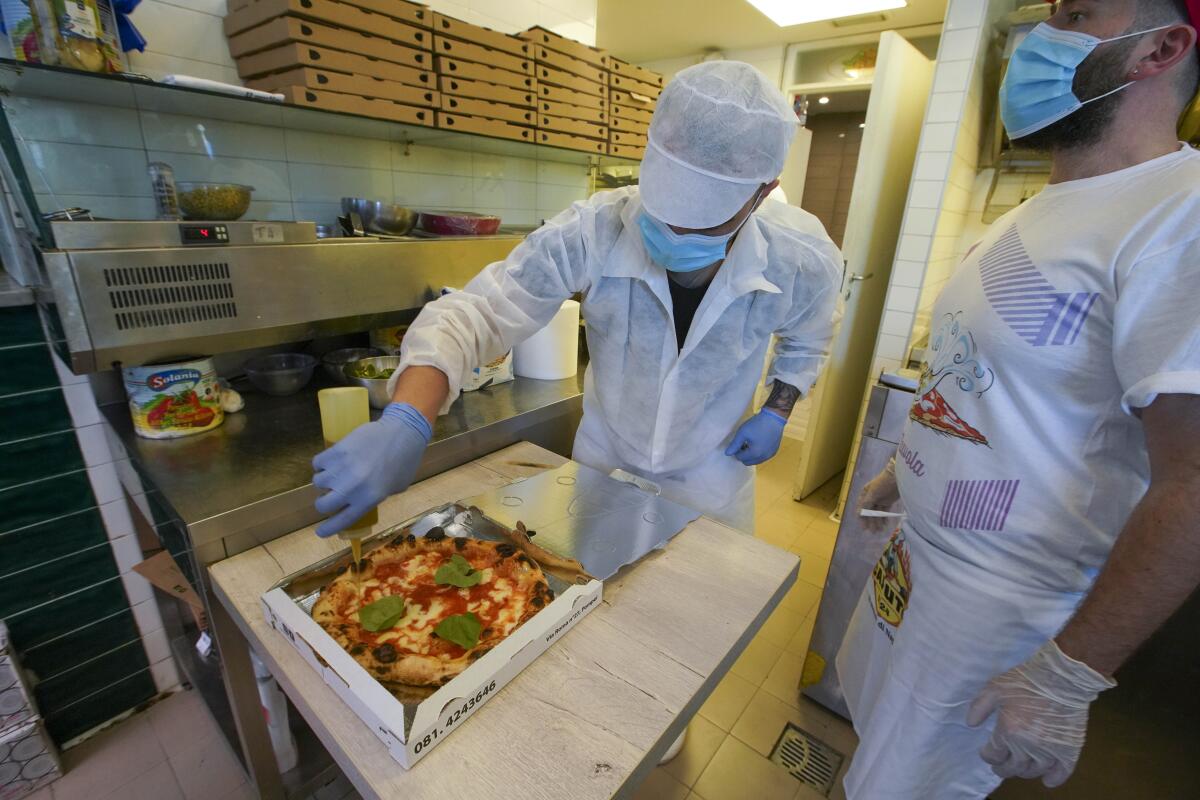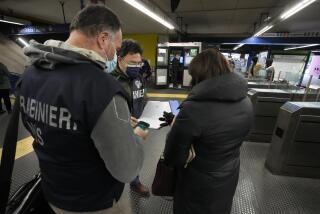Pizza’s back on the menu in its birthplace as Naples’ coronavirus shutdown eases

- Share via
NAPLES, Italy — Wood is burning again in Naples’ pizza ovens, giving a symbolic and savory boost to Neapolitans after two months of lockdown meant an end to their most iconic and favorite food.
Pizzerias reopened Monday night in the birthplace of pizza, albeit under restrictions and for home delivery only.
Whereas pizzerias in Rome and elsewhere were allowed to operate for takeout and delivery service, they were banned in Naples out of fears that such a congested, high-density city could fast become a new hot spot for COVID-19 infections.
Campania’s governor, Vincenzo De Luca, enforced strict lockdown measures, knowing that the region’s hospitals couldn’t handle a major influx of sick patients. In the end, Campania had a relatively manageable outbreak of about 4,300 people infected, half of whom didn’t need to be hospitalized.
With Italy as a whole gradually reopening, De Luca lifted bans on pizza deliveries as well as home deliveries from bars, pastry shops, ice cream parlors and restaurants.
“Surely this is a little restart for the entrepreneurs, important for us and for our region, our city and our nation,” said Giovanni Pezzuto, owner of a Neapolitan pizzeria. “This is a symbol of hope for the little firm that slowly can restart.”
The dough-twirling art of the Neapolitan pizzaiuolo - or “pizza-maker” - has secured a spot on UNESCO’s list of intangible heritage.
It’s not a total reopening, however. Clients can only place orders by phone — not in person — and all businesses must close at 10 p.m. The pizzerias have to be cleaned regularly, and workers must wear gloves and masks.
Vincenzo Capuano, owner of pizzeria Capuano, said even the partial reopening would help Campania’s economy because all his ingredients are sourced locally.
“To make pizza I have to buy the local flour from Naples, [local] San Marzano tomatoes. I have to buy the potatoes, the onions,” he said.
Without this support to the local economy, “after the health crisis we could have a much worse economic crisis.”
Italy was the first country in the West to be slammed by the outbreak, and its death toll is the highest in Europe and second only to the U.S., which has more than five times the population. Italy’s epicenter, however, was based in the north, and officials say the south was largely spared because the government locked down the whole country in time.
Nationwide, bars and restaurants are expected to be allowed to reopen in June for in-house service, but only with strict social-distancing and sanitation measures in place.
More to Read
Sign up for Essential California
The most important California stories and recommendations in your inbox every morning.
You may occasionally receive promotional content from the Los Angeles Times.










